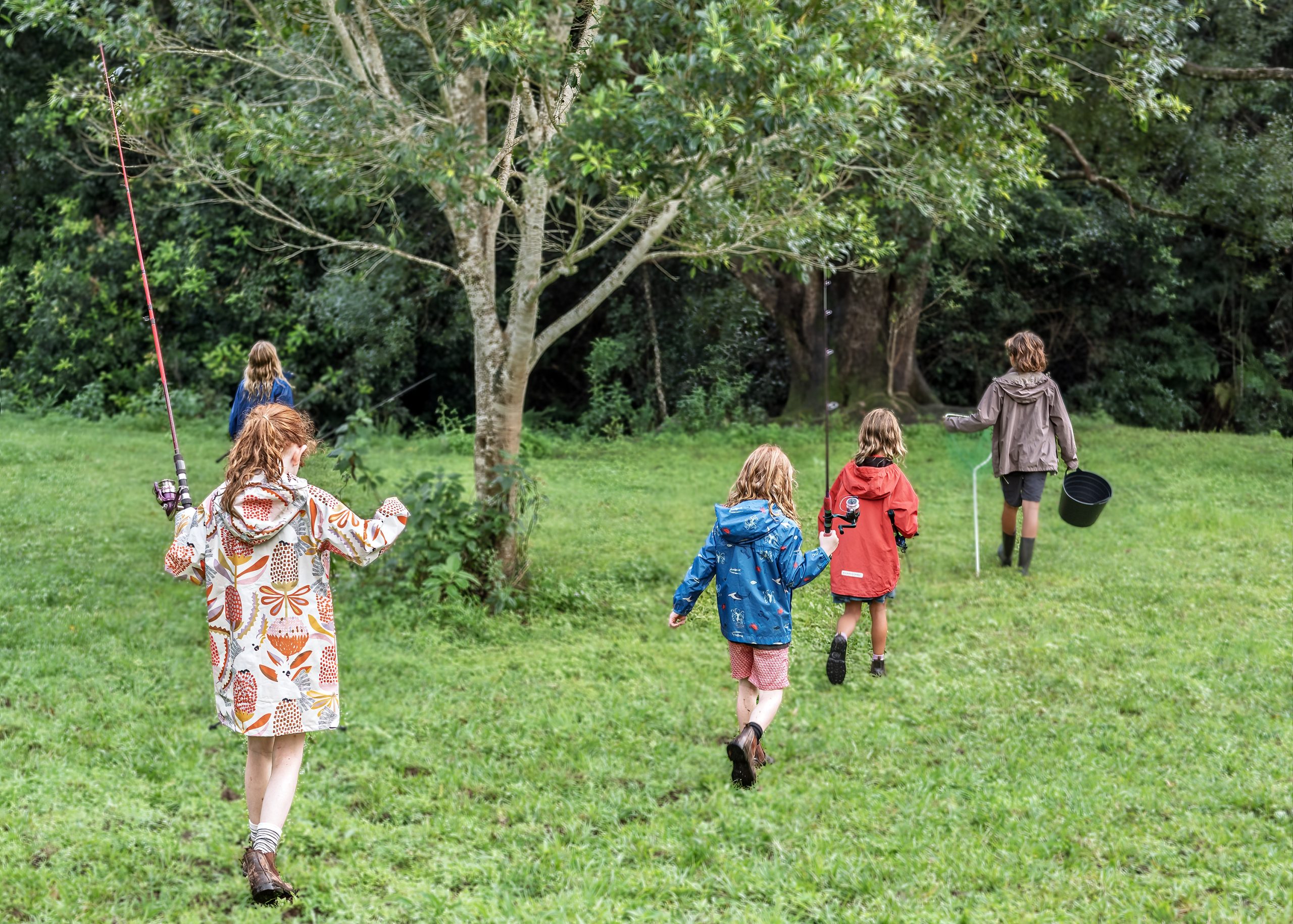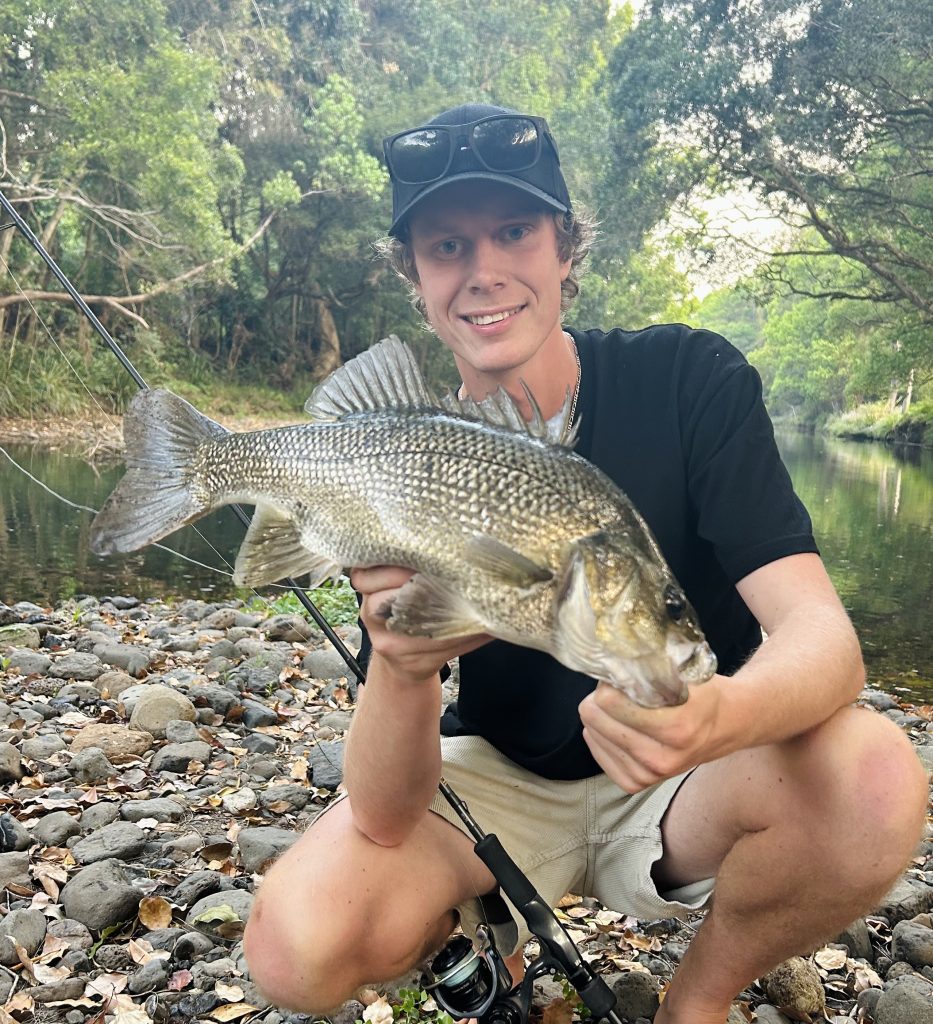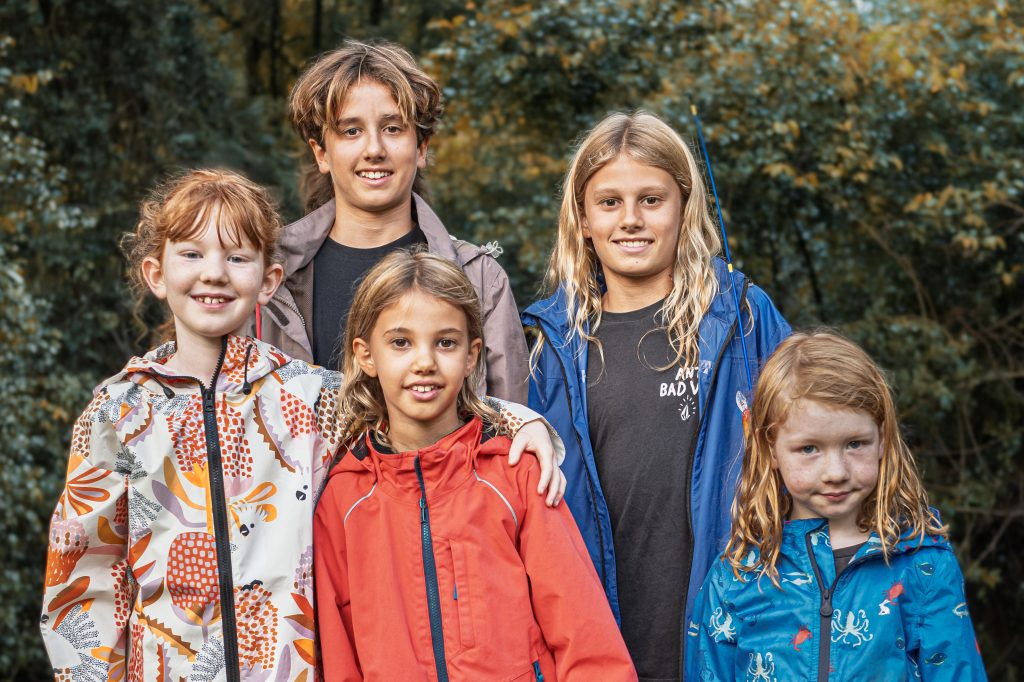
 Much is made these days of the negative side-effects of too many hours spent by teenagers and younger children on social media. There are, however, timeless ways kids can spend hours on end outside, enjoying nature. For instance: playing in creeks, building dams, exploring, swimming, fishing. This is what has happened for generations along Sleepy Creek, on Fowlers Lane, off the Hinterland Way.
Much is made these days of the negative side-effects of too many hours spent by teenagers and younger children on social media. There are, however, timeless ways kids can spend hours on end outside, enjoying nature. For instance: playing in creeks, building dams, exploring, swimming, fishing. This is what has happened for generations along Sleepy Creek, on Fowlers Lane, off the Hinterland Way.
Eli Clarke was 11 years old when his family moved onto the Jindibah community, in Fowlers Lane. At the time, his parents, Charlotte and Simon, said of the decision to move onto this rural community title (C.T.) property that they were dreaming “of a happy place where our children can grow with a respect and understanding of the environment.” In the seven years the family of six lived there, Eli fully developed his love of fishing into a fine art – and also created an early career as a passionate YouTubing nature lover, with a following in the thousands.
Running across the property for about a kilometre – including tributaries – is Sleepy Creek. Although Eli had started fishing at the age of six, living at Jindibah “is when my passion for fishing took off. I love fishing, camping and spending time outdoors and there, I had the freedom to walk down to Sleepy Creek whenever I wanted – sometimes with mates, my brother Asher, or just on my own.”
At the age of 15, in 2016, he started his own YouTube channel. “I bought my first GoPro Hero1 and began filming my bass fishing adventures. My channel captured bass fishing in the local creeks and waterways around Bangalow, Clunes, Lismore and Brunswick Heads.” He mainly filmed his adventures himself, propping his GoPro on fence posts and whatever else he could find – tripods “not even being a thought back then!”

His channel built up a large following of keen would-be fishers, wanting advice and practical suggestions – how to find the best fishing spot, what lures to use, what fish could be found where. According to Eli, who still lives locally, the most prominent fish to catch around Sleepy Creek, Byron Creek and the Bangalow area is the Australian bass. “They’re native to the region and are treated with a lot of respect by anglers who ‘catch and release’: they’re considered a sport fish, not something you keep. The bass fishing season is closed between 1 June and 31 August. Every year they need to migrate to saltwater to breed. At that time, fishing for bass is completely off-limits.”
In his experience, other species to be found walking the local riverbanks include “eels, eel-tailed catfish, mullet, the very rare eastern cod, platypus, turtles, bullrout (freshwater stonefish) and unfortunately, carp. Carp are an introduced species, causing major damaging impacts to our local freshwater creeks. Over the years, with more floods happening, this invasive species is growing rapidly and starting to cause damage. They eat the eggs of native fish like eel-tailed catfish, muddy up rivers and uproot river weeds, particularly in places like Emigrant Creek.”

Generations of children living at Jindibah have developed a love for fishing and just hanging out at the creek. Shortly after Carolyn and Neil Hannah moved into the original Fowler family farmhouse in 2018, Neil was delighted to discover the spiny freshwater crayfish (Euastacus fleckeri) in the creek. “I personally release everything I catch and don’t see any sense in taking anything out of the ecosystem,” Neil says. Today, his kids Lotte and Hamish can often be seen down by the creek, sometimes with neighbouring kids Otis, Theo and Nina Bachle. During the catfish breeding season, 14-year-old Otis has been fascinated watching the big circle of rocks the catfish make in Sleepy Creek, where they breed.
Like Eli before them, the kids living onsite today have seen plenty of huge eels, turtles, platypus, bass and eel-tailed catfish – not to mention water dragons and minnows. Otis just loves going down by the creek: “Being near the water makes me feel good,” he says. He likes to check out different types of lures, while Theo, who’s 11, likes the sound the water makes flowing over the rocks. They’re down at the creek several times a week, just a walk of a few hundred metres from their home. They find summer the best season for fishing, given the ease of finding bugs and cicadas as bait.
As youngsters, David and Jenny Kennedy’s three kids also loved exploring, swimming and rafting in the six swimming holes along Sleepy Creek. Though they caught bass and eels, all the fish they caught ended up back in the creek.
Just up Fowlers Lane, in their early teenage years, the two sons of Fay and Gary Dwyer would also spend countless hours along Sleepy Creek. “Our boys and their friends from up the lane, the Henry boys, would mainly build dams in the creek or race blackbean pods along the stream. They would spend hours along Sleepy Creek, hunting and cooking up eels, and catching and cooking yabbies. They were delicious!” Fay recalled. “These are very fond memories.”
Christobel Munson
Christobel, a founder of the Jindibah community, has lived there for 30 years. She has observed generations of children explore and enjoy its 113 acres, including the popular Sleepy Creek.
Group images Lyn McCarthy Niche Pictures, photo of Eli Clarke supplied.